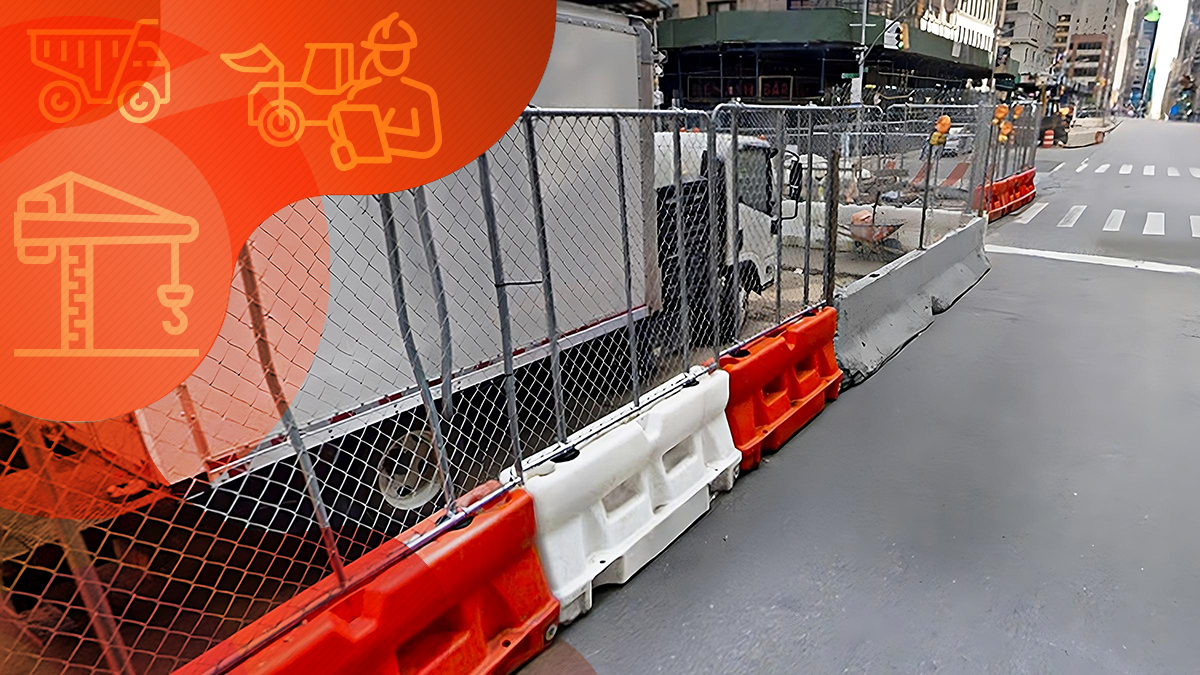What is a Construction Change Order?
Learn how construction change orders can reshape your project scope, timeline, and costs.

Whether building new or renovating old, construction projects rarely go as planned. There are simply too many variables that can change a project's scope. Adverse weather conditions can delay project schedules or force rework, as when high winds damage a partially completed roof.
Architectural plans and engineering drawings are graphic representations of an idea. Sometimes, the vision is unclear, or real-world constraints require a change in plans.
Change orders can be as straightforward as changing materials. Others may require face-to-face meetings to address complex issues, such as expanding the work area, which might also necessitate additional safety measures like extra fence panels or temporary gates.
For best results, contractors need to know the following:
- What is a change order -- and what isn't
- What to include in a change order
- How the change order process works
Many view the change order process as an unnecessary and an added administrative cost. But when used properly, it keeps work moving forward and prevents friction that can jeopardize working relationships.
What is a Change Order?
Change orders document alterations to a construction contract. They often modify the scope of work, which may increase project costs or extend project schedules.
An effective change order process ensures that all stakeholders approve any amendments to the contracted scope of work and minimizes contract disputes. Change orders may be additive or deductive.
Additive Changes
Additive changes are the most common type of change order. They may add a window to a windowless wall or change countertops from granite to marble. Whatever the request, the change adds to the scope of work. Even removing an existing wall is an additive change if it did not appear in the contract.
Deductive Changes
Deductive changes reduce the original scope of work. For example, a homeowner may decide to keep an existing wall to stay within budget, or an architect may reduce window sizes for aesthetic reasons. Sometimes, a deductive change order occurs because the building site can't support the original design.
Change orders are designed to protect investors, owners, and contractors. They require a consensus from all interested parties. However, property owners can force a change through a construction change directive.
Construction Change Directive (CCD)
Many construction contracts include a CCD clause. The clause allows owners to issue a CCD if an agreement cannot be reached on a change order. The directive requires contractors to implement the desired changes once they've been reviewed and approved.
Failing to execute a CCD can result in a breach of contract claim from the owner. Compensation may or may not be part of the CCD. If not, contractors may have to file a lawsuit against the owners.
Change orders offer a collaborative approach to contract modifications. They enable all parties to communicate amendments to original plans and arrive at a consensus so work can move forward. They prevent the friction that can result when a CCD is issued.
Request for Information (RFIs)
RFIs often initiate a change order, although they are not a change order. RFIs are issued when an interested party has questions about the construction project. For example, an architectural drawing does not indicate moisture-resistant drywall for bathrooms and laundry rooms.
The contractor sends an RFI to the owner asking if moisture-resistant drywall should be used. If the response is yes, the contractor issues a change order indicating the materials change, any cost changes, and the potential impact on the scheduled project. Because of the existing conversations, the change order can be quickly approved, and work can begin.


What Should a Construction Change Order Include?
Change order forms can be found online in a range of formats. Most construction contracts will reference a change order process and indicate the template to use. If no process or form is referenced in the contract, you may need to create a change order form. If so, the following items should be on each request form.
Project and Change Order Identifiers
Change order tracking is essential to ensure all requests are reviewed, and a response is given. Each construction project should receive a numeric identification number.
Change orders should begin with the project identifier followed by a sequential order number. For example, a building remodel has a project number of 24134. The first change order would be 24134. 001. Tracking software is available to help monitor the orders to ensure requests are handled promptly.
Project Contact Information
Begin with the project identifier, followed by the sequential change order number for the project. After the identifiers, include the following:
- Contract number as assigned in the contract.
- Project name or number and address.
- The owner’s name, address, email address(es), and telephone numbers.
- The general contractor's name, address, email address(es), and telephone numbers.
- The architect or engineer's name, address, email address(es), and telephone numbers.
- The contact information of the specific trade contractor involved in the change.
The more complete the contact information, the faster the response, as no one needs to stop to look up contact information before responding.
Change Dates
The change order form should include the following dates:
Change order notification: This date reflects when the property owner was first notified of a possible change request. If preparing the change order will take time, sending a notification ensures that any time requirements are met.
Submission date: This should be when the change order was sent to the property owner or representative.
Contracts often stipulate how and when a property owner should be notified of a change order. Anyone submitting a change order should review the contract carefully. Failure to follow procedure may delay approval or result in penalties or fines.
Description of Work: If the change order results from a RFI, include the RFI number. RFIs often contain background information that may help explain the request. However, do not depend on a RFI to explain why the change is needed.
Describe the work to be performed: Do not lump multiple changes under one order number. Although it may appear to save time, it only complicates the tracking and billing process.
Contractors usually bill and are paid by change order number, making it impossible to do a partial billing should one change be completed sooner than another.
Explain why the change is necessary: The change may be due to weather conditions, vandalism, scope or design changes, and site conditions. The change may result from external conditions beyond anyone's control, such as disruptions to supply chains that delay material delivery.
Attach clarifying documents: Include pictures, drawings, or other visual evidence that can help explain the change request. Highlight areas that justify the request. The clearer the request, the quicker the approval.
Schedule Changes
Property owners may or may not approve schedule changes, even if they approve the change order. For example, changing a window location before drywall is in place requires a minor change in framing. It adds eight hours of labor plus materials to the overall project.
The contractor adds a day to the schedule and moves the dates forward. The owner approves the change but keeps the end date the same, assuiming that the added work can be absorbed into the existing schedule.
If the change impacts a project's critical path, the project manager will want to see details. Suppose the window change happens at the end of the project, requiring the contractor to remove the drywall, reroute electrical, and change the framing and siding. The change adds a week to the schedule. Contractors should provide start and end dates for the change order, highlighting how the schedule is extended.
Cost Changes
Costs are always a concern, so any change order needs to include its cost. For instance, if the scope of work changes mid-project and requires additional workers on-site, it may also necessitate purchasing extra protective equipment, such as vests and helmets, to keep everyone safe and compliant with local regulations.
In addition to labor, equipment, and materials, costing should include overhead, profits, tax, insurance, and other administrative expenses associated with the change.
The pricing should follow the same format as the original contract. If UPB unit pricing was used, then the financial information should be presented in the same way. If an adjustment factor was used, be sure to include that in any calculations.


Updated Contract Value
Project managers may ask financial officers to review the change order costing. To simplify the process, include a breakdown of the monetary change as follows:
- Start with the original contract amount.
- Add the costs of previously approved change orders. If deductive changes were approved, list each order and its cost. Providing a breakdown can speed the approval process.
- Add the cost of the current change order.
- Enter the new contract total.
How Does the Change Order Process Work?
Once the change order is complete, the contractor signs it and forwards it to the property owner or project manager. Most contracts will include or reference a change order process stipulating review and response times. Be sure to have a tracking system to monitor individual change orders.
If RFIs are part of the contract, much of the change order documentation may already exist. RFIs are a way to seek clarification on plans, specifications, or project documents. They may lead to a change of order. Rather than reinvent the wheel, contractors should review applicable RFIs for supporting documentation.
Tying the RFI to a subsequent change order records how the decision to approve or disapprove a change order was made. That paper trail can serve as proof should a change order result in a dispute. For more information on the RFI process, check out our guide on Using RFIs in Construction.
Trend now

Reducing Impact Damage with Water-Filled Plastic Jersey Barriers
Understanding the effects of barrier materials on vehicles and their occupants can help improve road safety.

Choosing Between Concrete or Plastic Jersey Barriers
Not all barriers are built the same. Here’s what to know before choosing between plastic and concrete.

Advantages of Water Barriers with Fence Toppers
Learn how a fence topper transforms water barriers into a more secure, private, and effective work site solution.

